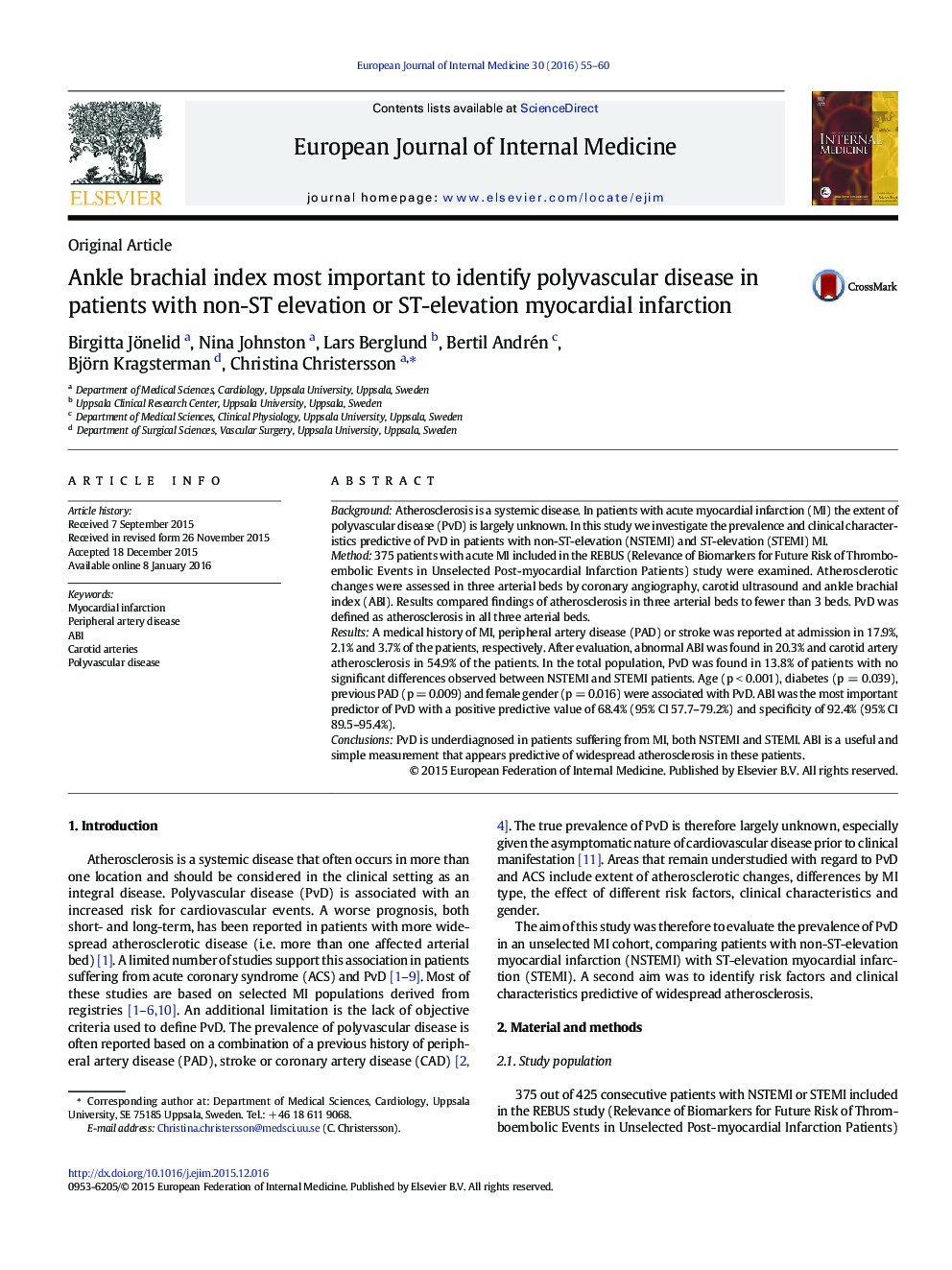| کد مقاله | کد نشریه | سال انتشار | مقاله انگلیسی | نسخه تمام متن |
|---|---|---|---|---|
| 3465904 | 1596536 | 2016 | 6 صفحه PDF | دانلود رایگان |

• PvD is more frequent in MI patients than reported at admission.
• Higher age, diabetes and female gender are associated with PvD in MI patients.
• Ankle brachial index is most important to identify PvD in patients with MI.
BackgroundAtherosclerosis is a systemic disease. In patients with acute myocardial infarction (MI) the extent of polyvascular disease (PvD) is largely unknown. In this study we investigate the prevalence and clinical characteristics predictive of PvD in patients with non-ST-elevation (NSTEMI) and ST-elevation (STEMI) MI.Method375 patients with acute MI included in the REBUS (Relevance of Biomarkers for Future Risk of Thromboembolic Events in Unselected Post-myocardial Infarction Patients) study were examined. Atherosclerotic changes were assessed in three arterial beds by coronary angiography, carotid ultrasound and ankle brachial index (ABI). Results compared findings of atherosclerosis in three arterial beds to fewer than 3 beds. PvD was defined as atherosclerosis in all three arterial beds.ResultsA medical history of MI, peripheral artery disease (PAD) or stroke was reported at admission in 17.9%, 2.1% and 3.7% of the patients, respectively. After evaluation, abnormal ABI was found in 20.3% and carotid artery atherosclerosis in 54.9% of the patients. In the total population, PvD was found in 13.8% of patients with no significant differences observed between NSTEMI and STEMI patients. Age (p < 0.001), diabetes (p = 0.039), previous PAD (p = 0.009) and female gender (p = 0.016) were associated with PvD. ABI was the most important predictor of PvD with a positive predictive value of 68.4% (95% CI 57.7–79.2%) and specificity of 92.4% (95% CI 89.5–95.4%).ConclusionsPvD is underdiagnosed in patients suffering from MI, both NSTEMI and STEMI. ABI is a useful and simple measurement that appears predictive of widespread atherosclerosis in these patients.
Journal: European Journal of Internal Medicine - Volume 30, May 2016, Pages 55–60